Seagull Symbolism and Mythology
Here’s an amazing fact that bird lovers enjoy quoting: seagulls live on every continent on the planet, even the harsh, frozen shores of Antarctica! This means that seagulls are present in just about every mythological tradition. Some cultures venerate the seagull and hold it up as a sign of good luck and fortune. Others are not so kind and treat this beautiful bird quite harshly.
In this guide on seagull symbolism, we’ll examine how seagulls in mythology vary between different cultures and touch on their overall symbolism. We’ll also discuss fascinating topics like what it means when you see seagulls inland (hint: it’s a great thing!) and what it might mean when you dream of this bird. Let’s not hesitate a moment longer, but dive right into this topic!

What Do Seagulls Symbolize?
The wide spread of seagulls around the world includes multiple unique symbolism concepts that make the seagull a fun bird to study. Seagull symbolism is particularly interesting because the bird itself is somewhat plain in appearance, with just a little white and gray and a fairly basic look. However, just about anybody in the world will know a seagull on sight and may understand some of the symbolism below.
Resourcefulness, Intelligence, and Loyalty
Anybody who’s ever been to a beach picnic knows that seagulls are scavengers who will snatch up whatever food they can when you aren’t looking. However, that resourceful hunting style has made them a symbol of persistence, intelligence, and resourcefulness. Their ability to live alongside so many species has also given them the symbolic meaning of loyalty and positivity.

Good Luck and Fortune
While there are some cultures that view many birds as an omen of bad luck, seagulls are typically considered a sign of good luck! Many cultures respect their intelligence and craftiness, and seagulls in mythology are often bearers of good tidings. They also represent open-mindedness. Sailors love when they see seagulls because they typically mean that land is close to them.
Intuition and Insight
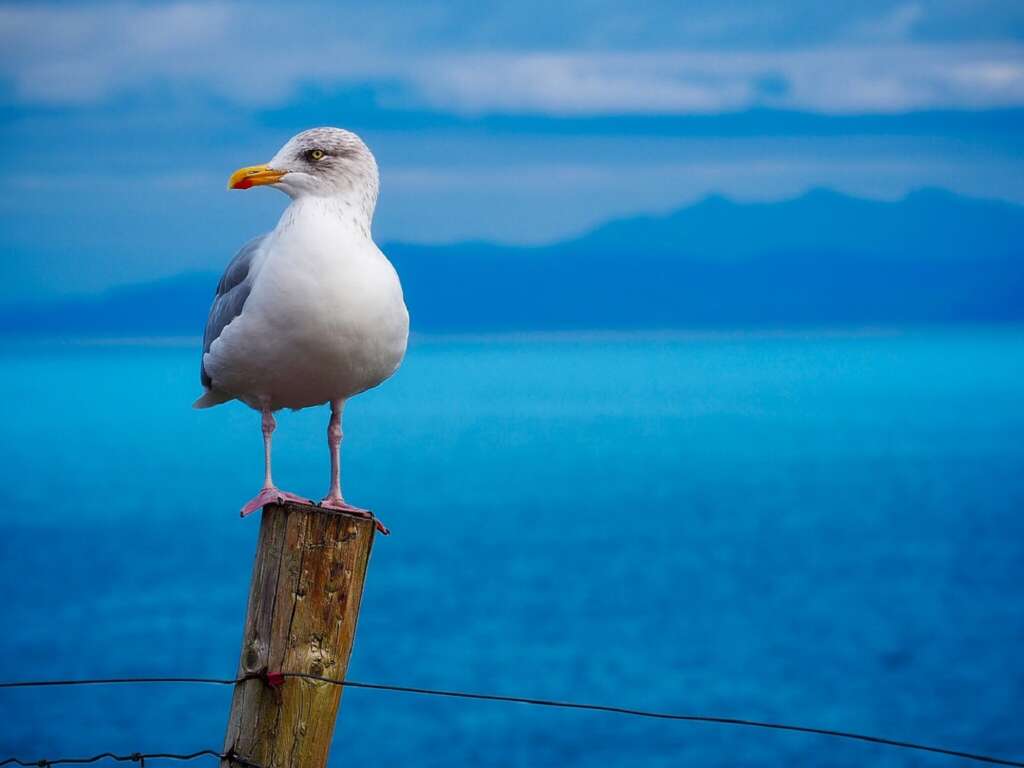
Seagulls are often considered a symbol of intuition because they so often see signs of fish before sailors and others noticed them. Seagulls are also considered insightful and were sometimes considered bad luck if they flew away quickly from sailors following them. As a spirit animal, they are often considered a symbol of the transition between life and death.
How Do Different Cultures Interpret Seagulls?
Seagulls in mythology often represent very different things in multiple cultures. Seagull symbolism may center on how a region interprets a seagull’s actions and how they behave. Let’s look at a few of these common cultural differences to learn more:
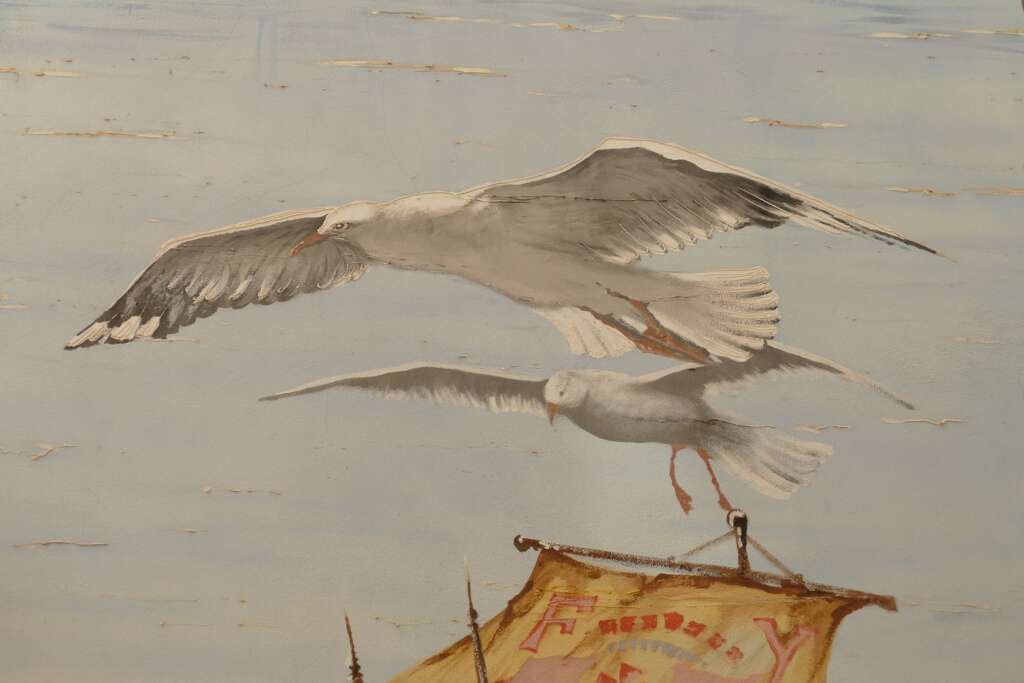
- Native American Culture: While Native American cultures were very broad and had many beliefs, there was a consensus that seagulls were messengers from the spiritual world. They represented death but positively, as it typically meant the person who died would live in the clouds with the gods.
- Ancient Roman Culture: Romans typically saw seagulls as a sign that someone or something would soon return to an area. The Romans were impressed by how high gulls would fly and their ability to come back down to Earth while hunting.
- Celtic Culture: Ancient Celts believed that seagulls were the messenger of their fertility god, Aengus. As a result, they were often considered very lucky birds and connected them with good fortune, specifically inheritances. Ireland was particularly enamored of the seagull.
- Norse Culture: Norse Vikings often traveled regularly and saw seagulls constantly on their voyages. They often considered them as messengers for fallen warriors and also a sign of good luck. Seeing a seagull during a battle meant a potentially successful battle in many Norse traditions.
Do Seagulls Have a Prophetic Meaning?
Prophetic seagull symbolism typically varies depending on the culture. However, the well-traveled nature of this bird means it typically represents leaving a restrictive or challenging situation or leaving something behind. This might mean finding a new job, traveling to a new area, or taking a new spiritual path. Seagulls also suggest perseverance and preservation beyond life’s toughest moments.
What Does It Mean When You See a Flock of Seagulls?
A flock of seagulls is much more than an awesome 80s band, as many cultures represented this bird’s gentle nature and ability to exist alongside many other animals. Typically, a flock of seagulls indicates a stronger social connection with your loved ones, as well as the importance of togetherness.

A flock of seagulls also represents protectiveness, the importance of parenting, and the benefits of social connection. Seeing a flock of these birds also serves as a reminder to avoid wastefulness, as seagulls are well known to carefully preserve their food and reuse their few resources repeatedly.
What Deity is Associated With Seagulls?
Seagull symbolism throughout various mythological traditions draws some connections to deities. While they’re not as often associated with gods as other birds, there are a few stories in which they play an important part. They are particularly prevalent in Greek mythology, though many Japanese sea gods also have some connection to seagulls for obvious reasons.
Celtic Gods: Manannan Mac Lir
As you might expect, many cultures connect sea gods with the seagull. The Celtic sea and afterlife god, Manannan Mac Lir, was heavily associated with seagulls. This god is often represented as a seagull, and is often shown to flow far and wide through various seas as a general messenger. Seagull symbolism in Celtic culture is often heavily tied to this god as a result.

Greek Gods: Leucothea, Halycon
Leucothea is a minor goddess in Greek mythology, one who protects sailors and anyone lost at sea. She is particularly connected to Odysseus in Homer’s Odyssey and aids him by flying to his aid as a seagull. As a result, she is the most heavily connected god or goddess to gulls and seabirds. However, there are other Greek deities with either a strong or minor connection to these birds.
For example, the Greek myth of Halcyon (which is where the term “halcyon days” comes from) features this young individual being turned into a kingfisher after dying on a journey. Zeus turns him and his lover, Ceyx, into kingfishers to help them be together. However, some Greek researchers believe that mythology writers may have mistakenly labeled the birds as kingfishers when they meant seagulls.

They believe this because the story is heavily tied to the sea. Halcyon dies during a voyage on the sea and his myth states that he and Ceyx spend time on the sea as birds. As kingfishers are birds typically associated with lakes and rivers, myth writers may have meant seagulls instead of kingfishers. Some translations even connect this myth with seagulls instead of kingfishers.
What Does the Bible Say About Seagulls?
While many ancient cultures were reverential or at least respectful towards the seagull, Christian thought is a little different. Split into Old and New Testament ideas, seagull symbolism in Christian thought varies heavily. Understanding seagulls in mythology includes knowing exactly what the Bible’s many writers thought about this common bird.
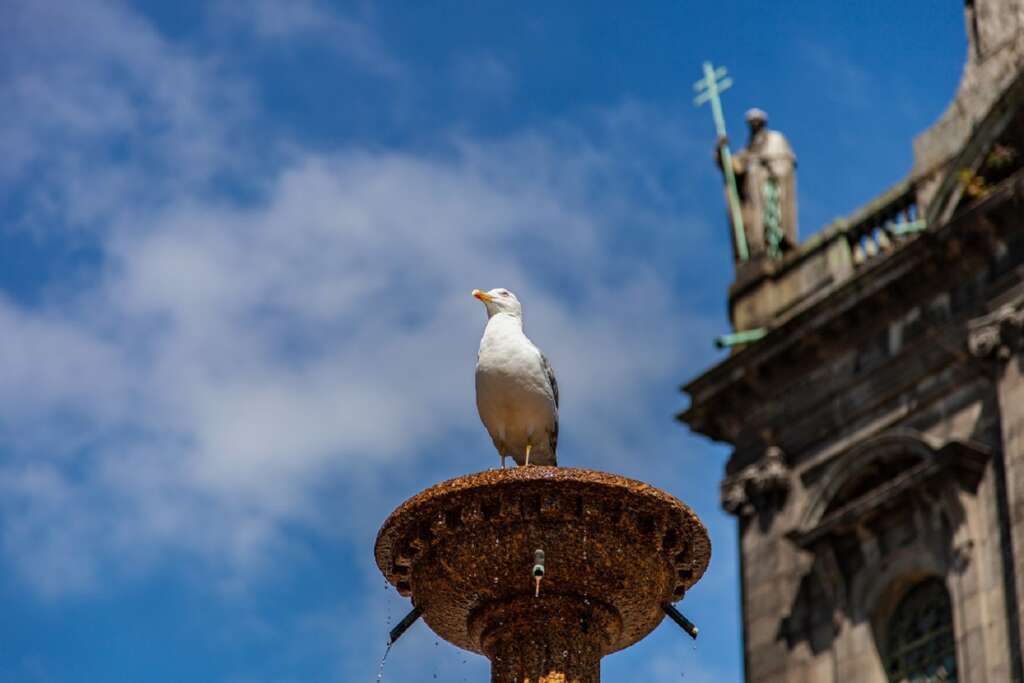
Old Testament Seagull References
Christianity has a somewhat mixed relationship with seagulls. The most commonly quoted reference to seagulls comes from Deuteronomy, an important Old Testament book that discusses many laws for the Jewish people, the seagull is referenced as a bird that should not be eaten. They are considered “unclean” and, because they were often seen stealing food and fighting among themselves, were a sign of sin.
This reference reads: “You may eat all clean birds. But these are the ones that you shall not eat: the eagle, the bearded vulture, the black vulture, the kite, the falcon of any kind; every raven of any kind; the ostrich, the nighthawk, the sea gull, the hawk of any kind…” (bolding is our formatting choice and is not part of the Bible).
Another commonly quoted seagull passage comes from Leviticus, the third book of the Torah or the original Jewish Bible. It also discusses animals that can be eaten and not eaten, highlighting species like the ostrich, nighthawk, and seagulls as birds that should not be eaten. These Old Testament references influence many Christian symbols about seagulls and their place in the animal kingdom.
This negative interpretation of this bird is rare in most mythological traditions. Seagulls in mythology are typically considered pure or good. The Old Testament’s disgust with the seagull is an interesting contrast and may have more to do with the region in which its writers likely lived. With food scarcer in the desert regions commonly inhabited by these Jewish writers, the seagull’s resourcefulness in finding food may have caused food shortages that made them a nuisance to those in the region.
New Testament Seagull References
What is interesting is that the New Testament doesn’t reference the seagull and Christ says nothing much about the bird. As a result, Christian followers who mostly follow the New Testament’s teachings may have a different opinion on the seagull than those who use the Old Testament as their guide.
For example, there are some Christian cultures that believe seagulls are a symbol of God. That’s because they fly so high and dive on the food on the beach, meaning that they were sent by God to watch over His children. Many contemporary Christian writings use the seagull in this way.
One example of this is the bestselling book, “Jonathan Livingston Seagull,” in which the titular bird is seen as a positive and illuminating presence. While not strictly Christian, the book has many similar philosophical and religious connections with Christianity, as Jonathan is seen as a symbol of peace.
Are Seagulls a Symbol in Catholicism?
Catholicism is heavily connected to Old Testament teachings, with many Catholic churches reading passages from the Old Testament during mass. More than any other Christian religion, it uses the Old Testament as an important source of knowledge. As a result, Catholic seagull ideas are usually quite negative, though it’s fair to say that there are few Catholic-specific ideas about seagulls.
However, birds are generally considered to be symbols of the “winged soul” in Catholic belief. For example, it’s not uncommon for Baby Jesus to have a bird in his hand in paintings. Other paintings of a young Jesus also use birds as a positive symbol. While seagulls are not used in this art, some Catholic thinkers may see seagulls with more positive symbolism than others in their faith.
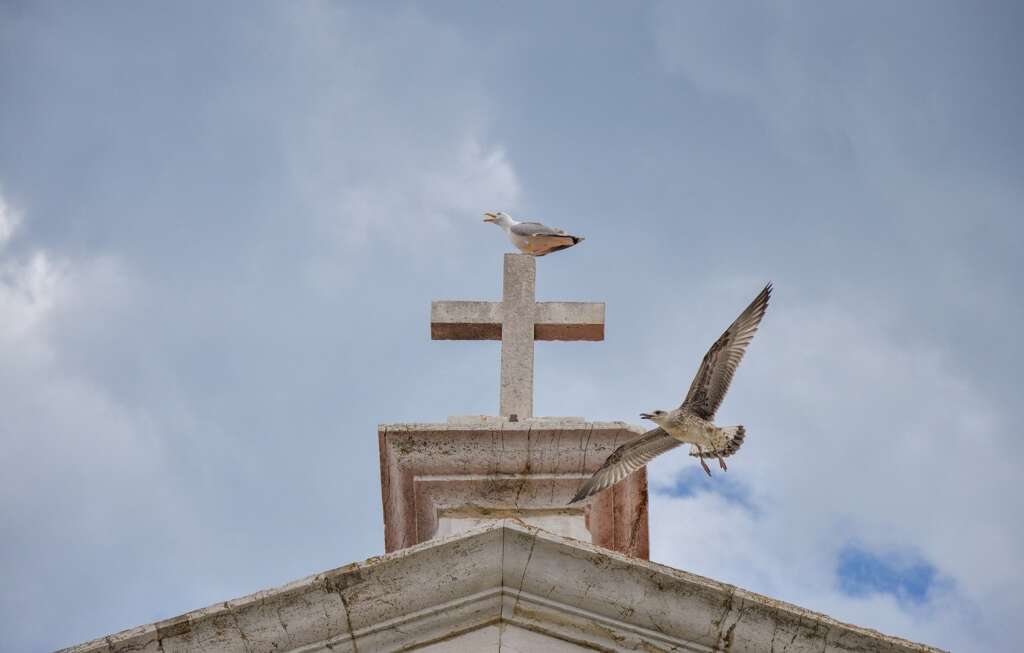
Other birds positively regarded by Catholics include eagles, which are often seen as a symbol of Jesus’ resurrection. They also inherited the positive symbolism associated with geese, which are often considered a symbol of vigilance and good fortune. When examining seagulls in mythology associated with Catholic belief, it is rarer to find nearly as many references as you find with these other birds.
What Does It Mean When You See Seagulls Inland?
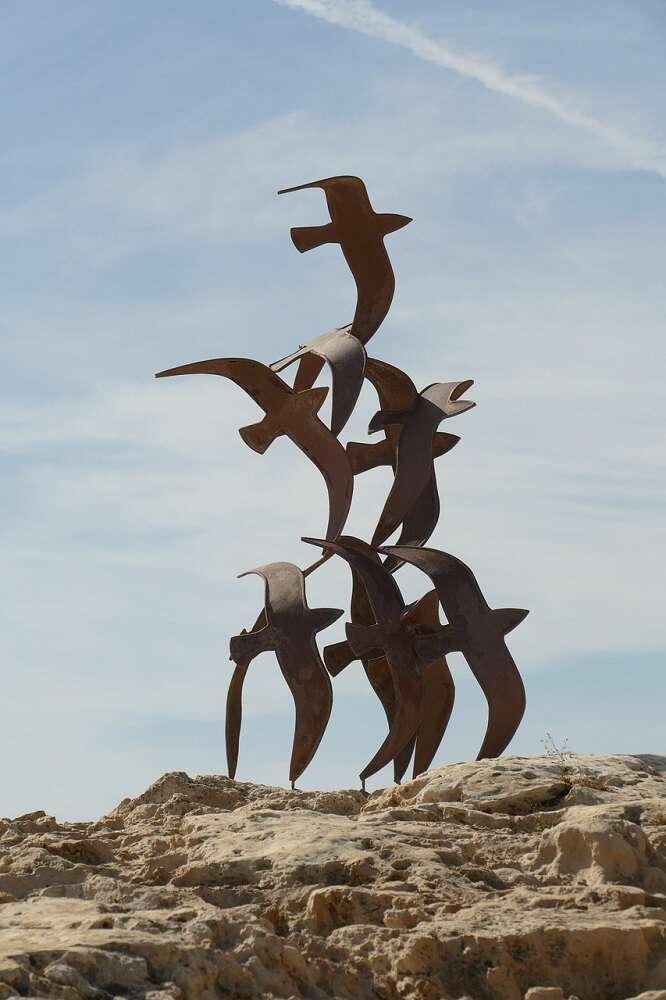
Recent studies of seagull behavior and settling patterns show that there’s been a heavy increase of seagulls inland, which was once considered a very rare occurrence. As a result, seagulls in mythology appearing inland are usually a positive boon, even if the current trend is due more to food source displacement and easier access to human garbage: all negative problems for this bird.
When you see a seagull inland, it is typically considered a positive experience connected with guidance and finding your way in the world. For example, sailors and other travelers often used seagulls to find their way home. Seagulls inland also represent a similar higher guidance, typically coming directly from a deity. Inland seagulls typically bring a deeper and more meaningful symbol because of their rarity.
For example, if you see a seagull inland that stays close to you or doesn’t immediately fly away, they may be telling you to stick to your current course in life. If they fly away, they may be suggesting you travel in that direction or otherwise change your life path. The exact message is up to interpretation and typically changes based on each person’s specific circumstances when they see the gull.
Seeing seagulls inland may also represent shortages, as ancient cultures noticed inland seagulls foraging in their storage bins. Some even considered inland seagulls a sign of ill fortune, though that depends on the gull’s behavior and that culture’s experience with the species.
What is the Spiritual Significance of Seagulls?
Seagulls in mythology have many spiritual meanings and concepts. We’ve touched on many of them throughout this article already. However, we’ll also highlight some that haven’t yet been discussed. Understanding these spiritual concepts can help you better grasp what this bird means in various cultures and make it easier to read various mythological books, articles, and essays.

Spiritual Help
If you see a seagull in your life, it might mean that you’re getting spiritual help or guidance from a higher power. It may mean that you’ve been given some spiritual gifts or symbols earlier and that you failed to recognize them. Seagulls often represent better spiritual communication and a higher connection with your deity, though that, of course, depends on your religious belief system.
Elevation and Positive Change
Seagulls often represent positive and uplifting changes because of their ability to fly high in the sky. They may represent a promotion at your job or other types of positive growth. Some people may even discover deeper spiritual meaning when seeing a seagull, though that depends on their interpretation of the bird. Some may see seagulls when making important decisions in life.
A Potential for Peace
The low-key personality of the seagull (when not bickering over food) and its ability to live comfortably alongside most species make it a powerful spiritual symbol of peace. Seeing one might mean that you’re going to find relief from depression, restlessness, and even anxiety. The seagull may bring peace into a person’s life and help them move on from these negative emotions.
High Independence
Seagulls are very independent birds that fly over large areas to hunt and feed. As a result, they may represent spiritual independence or personal growth. For example, some people may find seagulls a symbol of greater personal strength and obtaining independence from the negative influence of others. Some may also find seagulls inspire them towards romantic independence or more individual thought.

Moving Beyond Your Comfort Zone
Seagulls are known as opportunistic animals, meaning that they’re willing to get food from anything or settle just about anywhere. Therefore, seagulls may be telling you to push beyond your comfort zone and challenge yourself similarly. Maybe you need to look for a new job or find friends in different ways or from different walks of life.
Avoiding Gullibility
Though many cultures connect the seagull with intelligence, it is also known as a gullible bird that falls victim to most simple tricks. As a result, a seagull may tell you to avoid believing everything that you see and hear and to be careful about trusting others. For example, a seagull before a big business meeting may warn you to avoid trusting those in the meeting too closely.
Wrap up- Seagulls in mythology
We hope you’ve enjoyed learning about seagulls in mythology and what they symbolize around the word in different cultures. You might enjoy some of our other posts on bird symbolism and mythology
Related posts:
*Owl names in mythology
*Falcon names in mythology
*Hawk names in mythology
